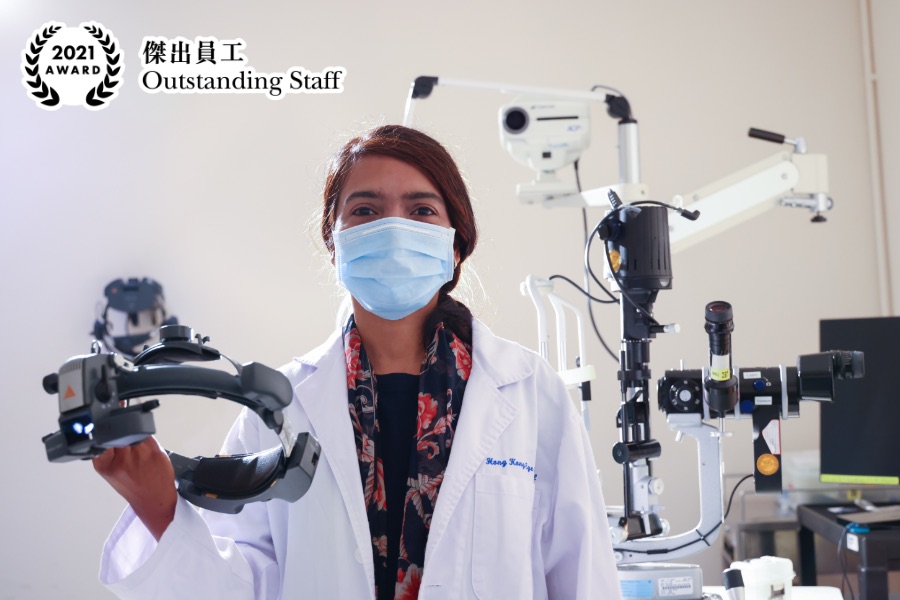Saving life in Ophthalmology
 Dr Shaheeda Mohamed
Dr Shaheeda Mohamed Consultant (Ophthalmology)
Hong Kong Eye Hospital
The passion of a doctor does not only rely on the motivation to treat patients, but also the thirst for knowledge. With the desire to gain new exposure, Dr Shaheeda Mohamed attends international conferences to get a first-hand view on the development of ophthalmology and apply such knowledge to advancing hospital service quality. To cultivate a positive learning attitude among her colleagues, regular team meetings are held to exchange opinions on literatures and complex cases, as well as to inspire junior doctors. “There is a limit to the number of patients a doctor can treat. However, through exchange of ideas and mutual learning, we are able to learn more proficiently and benefit our patients significantly as a result.”
As an expert in vitreoretinal diseases, Shaheeda has noticed the remarkable development of the technology in ophthalmology in the recent decade, signifying the need to keep up with the times. Just two years ago, she and her team introduced 3D vitreoretinal surgery after referring to the practice in Europe, America and Singapore. The reinvented surgical technology allows the eye surgeons to operate on the eye, especially the retina, at high resolution enabling fine details to be visualised and enhancing the success of complex vitreoretinal surgeries. The surgeon wears 3D glasses and views the digitally enhanced image of the eye on a large 3D screen, therefore enhancing the surgical precision. Comparing to conventional surgical approach, this new introduction also reduced the light intensity that minimises damage or phototoxicity to the photoreceptor cells.
As Shaheeda explains, ophthalmology exhibits complexity as it involves not only treatment to the eyes, but also surgical skills and profound knowledge in medicine. Applying such knowledge and skills is without doubts essential and satisfying for ophthalmologists. Recently, she had a male patient who sought help due to persistent blurry sight. Examination of his eyes revealed bilateral extensive cellular infiltrates of the retina. “I suspected that these were leukaemic infiltrates, and referred him immediately to the Accident & Emergency Department. His white blood cell count was found to be many times higher than normal, and due to a team effort working with the haematologist that evening, he was then diagnosed with leukaemia and started on emergency treatment to lower the white blood cell count. He would not have promptly received treatment if we had been unable to identify his condition at such an early stage. He recovered well and is very grateful to us. This remains a valuable lesson to me that, being an ophthalmologist can actually save someone’s life.”